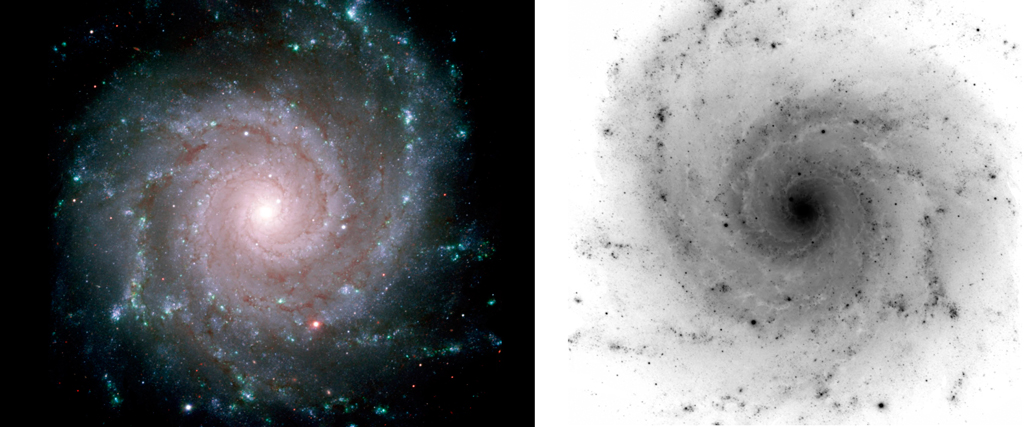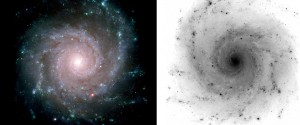November 20, 2013 – Back in September I wrote a blog posting called “Why Dark Matter Matters.” In it I described the importance of dark matter in our understanding of galaxy formation and stated that it was the invisible glue holding the Universe together.
When I was a youngster matter consisted of atoms and a few subatomic particles – protons, neutrons and electrons. As I have grown older physics and chemistry have discovered many additions to matter that include six types of quarks, six types of leptons, twelve different bosons, photons, gluons, W and Z particles and the recently touted Higgs Boson. But when cosmologists, chemists and physicists talk about dark matter they until recently have described it as a single particle. It is akin to being back in my childhood when I first learned about atoms. How is that even plausible? If matter can consist of all kinds of particles why can’t dark matter also be multi-faceted?
A growing consensus on dark matter suggests that it consists of more than one particle just like visible matter. This may explain why no single experiment whether in deep mines or on the International Space Station has captured a signature that all can agree represents the “Ah ha” moment in the search for dark matter.
Earlier this year Harvard physicist, Lisa Randall, along with one of her colleagues presented a new theory which they called double-disk dark matter or DDDM. We in the visible matter world see the shadow universe of dark matter as inert and use that as the explanation for why we have such trouble detecting it. But the DDDM theory paints a very different picture. In it dark matter interacts within its own medium forming dark atoms and a rich dark chemistry and physics, as complex as our world of visible matter.
Randall has remarked in interviews that dark matter may “not be dark with respect to its own light.” In other words, dark matter isn’t dark within itself. Dark matter forms a universe that parallels our visible one. In DDDM there is a dark matter equivalent to our visible Milky Way, (see the contrasting images below). In DDDM there are dark solar systems with dark suns, dark planets and even a dark Earth. Sounds far fetched but what has remained unexplained by results from underground particle detectors suggests – not so much.














